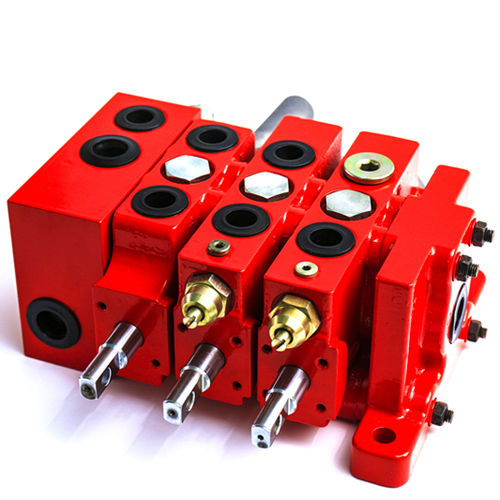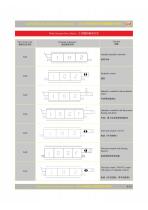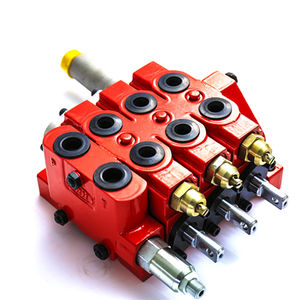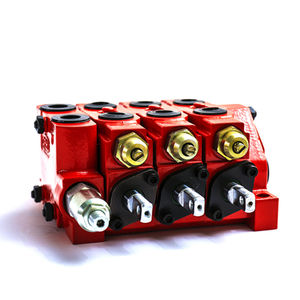
- Hydraulics - Pneumatics
- Valve
- Spool hydraulic directional control valve
- Shanghai Guorui Hydraulic Technology Co., Ltd
Spool hydraulic directional control valve GKV80manualproportionalsectional





Add to favorites
Compare this product
Characteristics
- Type
- spool
- Actuating method
- manual
- Other characteristics
- proportional, sectional, cast iron, aluminum
- Operating pressure
Min.: 0 bar
(0 psi)Max.: 350 bar
(5,076 psi)- Flow rate
80 l/min
(21 us gal/min)
Description
GKV80 Sectional Directional Control Valves
Features
Valve body is made from grey cast iron (inlet module, work module, outlet module)
Spring cap, mechanical detent cap and electrical or hydraulic pilot controlled module are made from cast aluminum or die-cast aluminum.
Parallel circuit: each section feature a load check valve, optional inlet port with a overload valve or check valve.
Overload protection valve for anti-cavitation.
Series circuit is available.
Optional control method: electric, hydraulic remote, manual and wire pulling.
Available power beyond port.
Can be modified to be a closed center.
Optional mechanical positioning, with adjustable force.
Inlet module can configure a direct acting or pilot relief valve and the valve position can be changed.
Hydraulic lock valve is available on each port.
Mechanical hydraulic lock is also available to adapt to the requirements from lifting mechanism of tractor and lifting machinery for locking heavy items.
Different functions of spools are provided to control two-way cylinder, one-way cylinder, or for hydraulic motor.
Valve spool with floating function is available.
Valve features small operating force and good flow characteristics.
Proportional control is achievable (without pressure compensation).
Section numbers: 1-8.
Catalogs
Other Shanghai Guorui Hydraulic Technology Co., Ltd products
Sectional Directional Control Valves
Related Searches
- Valve
- Directional control valve
- Piston actuator valve
- Hydraulic valve
- Compact valve
- Hydraulic directional control valve
- Spool hydraulic directional control valve
- Small valve
- Steel valve
- Electrically-operated hydraulic directional control valve
- Flow regulator valve
- Manual hydraulic directional control valve
- 4-way hydraulic directional control valve
- Proportional hydraulic directional control valve
- Monobloc hydraulic directional control valve
- Electro-hydraulic hydraulic directional control valve
- Manifold valve
- Pilot-operated hydraulic directional control valve
- Flow divider
- Aluminum hydraulic directional control valve
*Prices are pre-tax. They exclude delivery charges and customs duties and do not include additional charges for installation or activation options. Prices are indicative only and may vary by country, with changes to the cost of raw materials and exchange rates.





